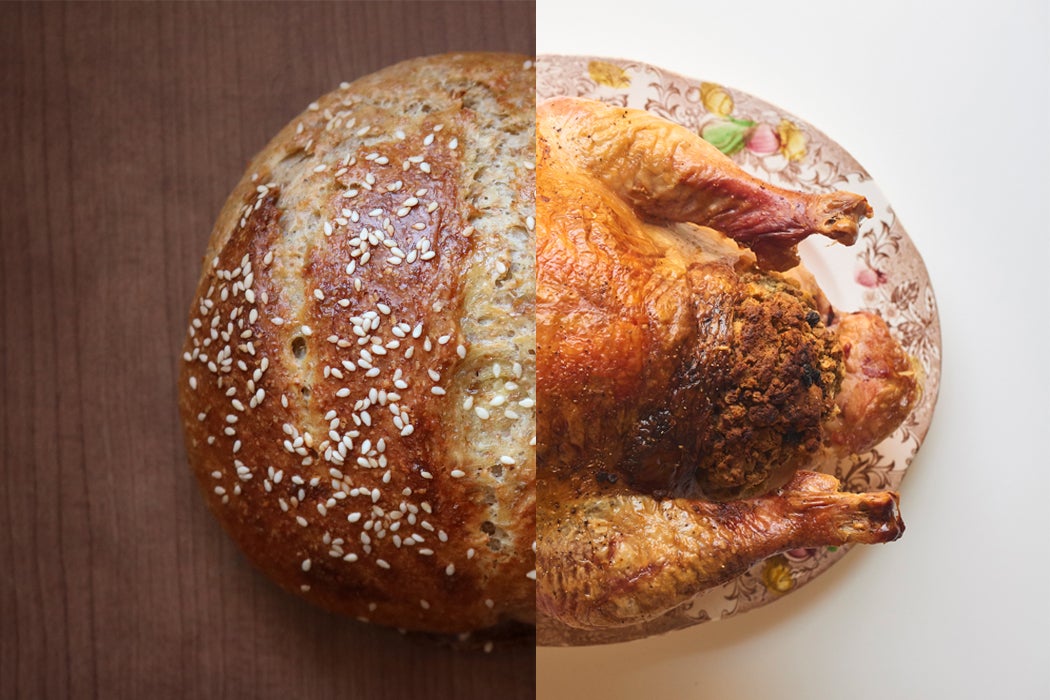Why is it baked ham but roast pork? Why do we have two terms for the same oven, the same temperature setting knob or keypad, for what is now essentially the same kind of cooking?
Anthropologist Andrew L Sihler breaks down the curious pervasiveness of this old distinction “even in the absence of any currently operative functional contrast.” Originally, roasting was open-fire cooking, often on a turning spit, while baking was something done in a more or less sealed interior. They both had their purposes. Dutch ovens, which originally had hot coals piled around them, including on the lid, were a version of such contained baking. Hams were typically coated in flour paste or a more complicated dough which cooked to a crust (sometimes eaten, sometimes simply cut away), hence they were baked—inside the crust. Hams in crust, by the way, date at least back to the Roman Apicius in the second century.
Sihler reaches back into the fifteen century for this list of roasted foods: bef, mouton, vele, conyngys (conies, or rabbits), lamrey, capoun, fesaun (pheasant), bitore (bittern), curlewe, egret, plouer (plover), partirch (partridge), and heron. Early English cooking was very much Frenchified.
Sihler notes “the delicacy called cokentrice,” which seems to have been a prototype of the turducken: the front end of a capon, including the head and comb, stitched to the back end of a pig, both parts stuffed and the whole roasted on a spit. This was meant to emulate the cockatrice, a mythical beast with bird’s body and serpent’s tail. Sihler does not elaborate on the stuffing, but according to this 1440 recipe it was: “whyte & the yolkes of eggs, and cast thereto, and svette of a schepe, and saffron, & salt, and pouudre of gynger, and grated bread.” (Good luck on getting some “svette of a schepe.”)
Fifteenth-century baked foods, Sihler continues, included “meat pyes,” lampreys and many other things in crust, Paris tarts, bone marrow tarts, and crustarde ryal (“a sort of quiche of bone marrow”).
He goes on to cite the bible of Victorian cooking, Mrs. Beeton’s Book of Household Management, first published in 1861: “The difference between roasting meat and baking it, may be generally described as consisting in the fact, that, in baking it, the fumes caused by the operation are not carried off in the same way as occurs in roasting.”
Want more stories like this one?
Beeton was particularly taken with the technological transformation of the kitchen in her day. The newfangled ranges, called Leamington kitcheners—essentially ovens with stovetops—had adjustable vents for the interior cabinet. The vents allowed for roasting, something the tightly-closed chambers built into enormous fireplaces that made up the earlier ovens couldn’t do. Mrs. Beeton approved.
In short, the verbs bake and roast were “in origin strictly functional.” But technological changes—not to mention changes in who cooks and how we eat—”have submerged the functional contrast” between the words since the nineteenth century. We still bake bread and roast meat, but we’ve practically forgotten why.







